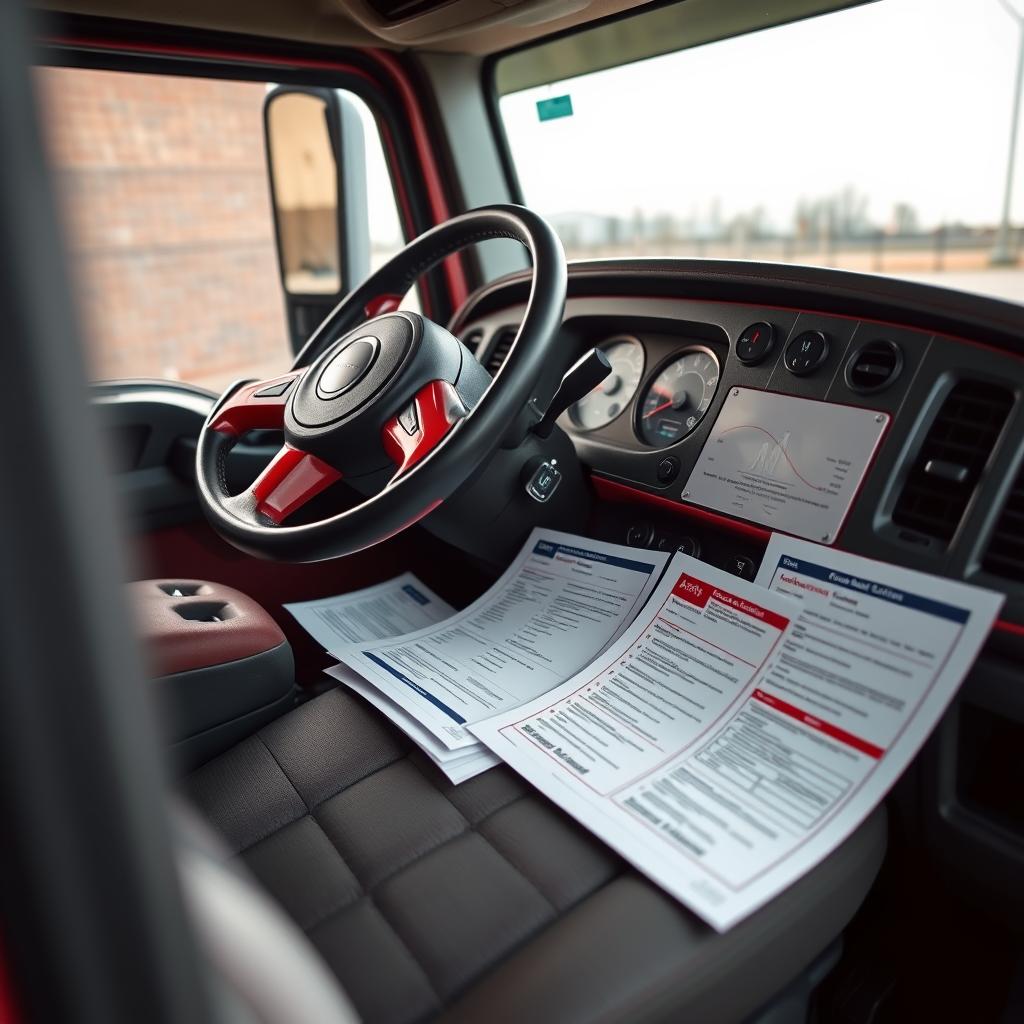Complete Truck Safety Certification Guide: Everything You Need to Know
The world of truck driver safety certification in America is complex but crucial for both individual drivers and fleet operators. Whether you’re just starting your career in trucking or managing a fleet of vehicles, understanding the complete scope of truck safety certifications is essential for compliance, safety, and professional growth.
Understanding the Basics of Truck Safety Certification
Truck safety certification encompasses various aspects of professional driving, from basic licensing requirements to specialized endorsements. According to the Federal Motor Carrier Safety Administration (FMCSA), proper certification is not just a legal requirement but a fundamental aspect of maintaining highway safety.
Key Components of Safety Certification
• Commercial Driver’s License (CDL)
• Department of Transportation (DOT) certification
• Hazardous Materials Endorsement (if applicable)
• Medical certification
• Ongoing safety training requirements
Commercial Driver’s License Requirements
The cornerstone of truck driver safety certification in America is obtaining a valid CDL. This process involves several steps and requirements:
Basic Eligibility Criteria:
• Minimum age requirement (typically 18 for intrastate, 21 for interstate)
• Valid regular driver’s license
• Clean driving record
• Ability to pass DOT physical examination
CDL Classes and Endorsements
Different types of commercial vehicles require specific CDL classes:
• Class A: Combination vehicles, GVWR 26,001+ pounds
• Class B: Single vehicles, GVWR 26,001+ pounds
• Class C: Vehicles transporting hazardous materials or 16+ passengers
Additional endorsements may include:
• H – Hazardous materials
• N – Tank vehicles
• P – Passenger transport
• T – Double/triple trailers
• S – School bus
Medical Certification and Physical Requirements
A crucial component of truck driver safety certification is maintaining proper medical certification. The DOT physical examination must be conducted by a certified medical examiner listed on the FMCSA National Registry.
Key Medical Requirements:
• Blood pressure within acceptable ranges
• Vision requirements (20/40 in each eye with or without correction)
• Hearing capabilities
• Physical ability to perform essential job functions
• No disqualifying medical conditions
Medical certificates are typically valid for:
• 24 months for healthy drivers
• 12 months for drivers with certain controlled medical conditions
• 3 months for drivers requiring monitoring of specific conditions
Ongoing Safety Training and Compliance
Safety certification doesn’t end with obtaining a CDL. Continuous training and education are essential components of maintaining certification and ensuring safety on the road.
Required Regular Training:
1. Hours of Service (HOS) regulations
2. Electronic Logging Device (ELD) compliance
3. Vehicle inspection protocols
4. Load securement
5. Emergency procedures
6. Defensive driving techniques
Safety Management Systems
Modern truck safety certification programs often incorporate comprehensive safety management systems, including:
• Regular safety meetings and briefings
• Performance monitoring and evaluation
• Accident prevention strategies
• Risk assessment protocols
• Compliance documentation
Specialized Certifications and Endorsements
Beyond basic requirements, various specialized certifications enhance a driver’s qualifications and employment opportunities.
Popular Specialized Certifications:
• HAZMAT certification
• Tank vehicle endorsement
• Intermodal container transport
• Temperature-controlled cargo
• International operations certification
Technology and Safety Certification Integration
Modern truck safety certification increasingly incorporates technological elements:
Digital Compliance Tools:
• Electronic logging devices (ELDs)
• GPS tracking systems
• Safety monitoring systems
• Digital training platforms
• Mobile compliance apps
Benefits of Technology Integration:
1. Real-time compliance monitoring
2. Automated record-keeping
3. Improved safety tracking
4. Enhanced training capabilities
5. Simplified certification renewal processes
Best Practices for Maintaining Certification
Maintaining truck driver safety certification requires attention to detail and regular updates:
Essential Maintenance Steps:
1. Keep track of expiration dates
2. Schedule medical examinations well in advance
3. Complete required continuing education
4. Maintain clean driving records
5. Document all training and certifications
6. Stay informed about regulation changes
Record Keeping Requirements:
• Digital copies of all certifications
• Medical examination records
• Training completion certificates
• Endorsement documentation
• Safety violation records (if any)
Conclusion and Next Steps
Maintaining proper truck safety certification is crucial for both individual drivers and fleet operators. By following the guidelines outlined in this comprehensive guide, you can ensure compliance with regulations while maintaining the highest safety standards.
Ready to take your truck safety certification to the next level? Contact our team of certification experts today. We provide comprehensive support for all aspects of truck driver safety certification in America, from initial licensing to specialized endorsements and ongoing compliance management.
Remember, proper certification isn’t just about compliance – it’s about creating a safer environment for everyone on the road. Take the first step toward comprehensive certification today.







